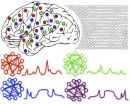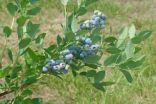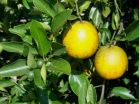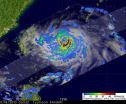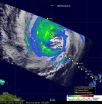(Press-News.org) Berkeley — When it comes to conducting complex tasks, it turns out that the brain needs rhythm, according to researchers at the University of California, Berkeley.
Specifically, cortical rhythms, or oscillations, can effectively rally groups of neurons in widely dispersed regions of the brain to engage in coordinated activity, much like a conductor will summon up various sections of an orchestra in a symphony.
Even the simple act of catching a ball necessitates an impressive coordination of multiple groups of neurons to perceive the object, judge its speed and trajectory, decide when it's time to catch it and then direct the muscles in the body to grasp it before it whizzes by or drops to the ground.
Until now, neuroscientists had not fully understood how these neuron groups in widely dispersed regions of the brain first get linked together so they can work in concert for such complex tasks.
The UC Berkeley findings are to be published the week of Sept. 20 in the online early edition of the journal Proceedings of the National Academy of Sciences.
"One of the key problems in neuroscience right now is how you go from billions of diverse and independent neurons, on the one hand, to a unified brain able to act and survive in a complex world, on the other," said principal investigator Jose Carmena, UC Berkeley assistant professor at the Department of Electrical Engineering and Computer Sciences, the Program in Cognitive Science, and the Helen Wills Neuroscience Institute. "Evidence from this study supports the idea that neuronal oscillations are a critical mechanism for organizing the activity of individual neurons into larger functional groups."
The idea behind anatomically dispersed but functionally related groups of neurons is credited to neuroscientist Donald Hebb, who put forward the concept in his 1949 book "The Organization of Behavior."
"Hebb basically said that single neurons weren't the most important unit of brain operation, and that it's really the cell assembly that matters," said study lead author Ryan Canolty, a UC Berkeley postdoctoral fellow in the Carmena lab.
It took decades after Hebb's book for scientists to start unraveling how groups of neurons dynamically assemble. Not only do neuron groups need to work together for the task of perception – such as following the course of a baseball as it makes its way through the air – but they then need to join forces with groups of neurons in other parts of the brain, such as in regions responsible for cognition and body control.
At UC Berkeley, neuroscientists examined existing data recorded over the past four years from four macaque monkeys. Half of the subjects were engaged in brain-machine interface tasks, and the other half were participating in working memory tasks. The researchers looked at how the timing of electrical spikes – or action potentials – emitted by nerve cells was related to rhythms occurring in multiple areas across the brain.
Among the squiggly lines, patterns emerged that give literal meaning to the phrase "tuned in." The timing of when individual neurons spiked was synchronized with brain rhythms occurring in distinct frequency bands in other regions of the brain. For example, the high-beta band – 25 to 40 hertz (cycles per second) – was especially important for brain areas involved in motor control and planning.
"Many neurons are thought to respond to a receptive field, so that if I look at one motor neuron as I move my hand to the left, I'll see it fire more often, but if I move my hand to the right, the neuron fires less often," said Carmena. "What we've shown here is that, in addition to these traditional 'external' receptive fields, many neurons also respond to 'internal' receptive fields. Those internal fields focus on large-scale patterns of synchronization involving distinct cortical areas within a larger functional network."
The researchers expressed surprise that this spike dependence was not restricted to the neuron's local environment. It turns out that this local-to-global connection is vital for organizing spatially distributed neuronal groups.
"If neurons only cared about what was happening in their local environment, then it would be difficult to get neurons to work together if they happened to be in different cortical areas," said Canolty. "But when multiple neurons spread all over the brain are tuned in to a specific pattern of electrical activity at a specific frequency, then whenever that global activity pattern occurs, those neurons can act as a coordinated assembly."
The researchers pointed out that this mechanism of cell assembly formation via oscillatory phase coupling is selective. Two neurons that are sensitive to different frequencies or to different spatial coupling patterns will exhibit independent activity, no matter how close they are spatially, and will not be part of the same assembly. Conversely, two neurons that prefer a similar pattern of coupling will exhibit similar spiking activity over time, even if they are widely separated or in different brain areas.
"It is like the radio communication between emergency first responders at an earthquake," Canolty said. "You have many people spread out over a large area, and the police need to be able to talk to each other on the radio to coordinate their action without interfering with the firefighters, and the firefighters need to be able to communicate without disrupting the EMTs. So each group tunes into and uses a different radio frequency, providing each group with an independent channel of communication despite the fact that they are spatially spread out and overlapping."
The authors noted that this local-to-global relationship in brain activity may prove useful for improving the performance of brain-machine interfaces, or lead to novel strategies for regulating dysfunctional brain networks through electrical stimulation. Treatment of movement disorders through deep brain stimulation, for example, usually targets a single area. This study suggests that gentler rhythmic stimulation in several areas at once may also prove effective, the authors said.
INFORMATION:
Other co-authors of the study are Jonathan Wallis, UC Berkeley associate professor of psychology; Dr. Karunesh Ganguly, UC Berkeley post-doctoral fellow in the Carmena lab and staff scientist at the San Francisco Veterans Affairs Medical Center; Steven Kennerley, now a senior lecturer at University College London's Institute of Neurology; Charles Cadieu, UC Berkeley post-doctoral researcher in neuroscience; and Kilian Koepsell, UC Berkeley assistant researcher in neuroscience.
The National Institutes of Health, National Science Foundation, U.S. Department of Veterans Affairs, American Heart Association, Defense Advanced Research Projects Agency and the Multiscale System Center helped support this research.
For neurons to work as a team, it helps to have a beat
2010-09-21
ELSE PRESS RELEASES FROM THIS DATE:
'Wyldewood,' first release from Elderberry Improvement Project
2010-09-21
SPRINGFIELD, MO—The American elderberry is showing promise as a profitable commercial fruit crop. Traditionally used for making jelly, juice, and wine, elderberry is becoming increasing important in North America's burgeoning "nutraceutical" industry. Historically, elderberries have mostly been harvested from the wild; researchers have made recently made efforts to select or develop improved cultivars. Increased interest and emerging markets are encouraging scientists to develop improved elderberry cultivars that yield consistent, superior production. Scientists from the ...
'Blue Suede' premiers: New blueberry recommended for home gardeners
2010-09-21
GRIFFIN, GA—Blueberry aficionados will soon have a tasty, colorful new variety for their backyard gardens. Blueberry experts D. Scott NeSmith and Mark K. Ehlenfeldt introduced 'Blue Suede™' in a recent issue of HortScience. The new southern highbush blueberry (Vaccinium hybrid) was released by the University of Georgia's College of Agricultural and Environmental Sciences, the University of Georgia Agricultural Experiment Station, and the U.S. Department of Agriculture–Agricultural Research Service. 'Blue Suede™' is targeted for sales to the home gardener market.
According ...
Purdue researcher cracks open secret of oysters' ability to stick together
2010-09-21
WEST LAFAYETTE, Ind. - A Purdue University-led research team has uncovered the chemical components of the adhesive produced by oysters, providing information that could be useful for fisheries, boating and medicine.
A better understanding of oysters' ability to stick together to form complex reefs would help those trying to boost the dwindling oyster population, aid in the creation of materials to keep boat hulls clean without harming the environment, and bring researchers one step closer to creating wet-setting adhesives for use in medicine and construction.
Jonathan ...
Rotating high-pressure sodium lamps provide flowering plants for spring markets
2010-09-21
EAST LANSING, MI—When consumers visit garden centers in spring they will most likely buy flowering ornamental plants that are ready for their home gardens. Studies have shown that consumers favor plants that are already in flower rather than those that are "vegetative"—a preference that can present multiple challenges for commercial growers.
To satisfy consumers' wishes, producers of ready-to-flower ornamentals like bedding plants and perennials start growing crops far in advance of the spring buying season, often during the dark and short days of winter. When the days ...
NASA sees Tropical Storm Julia getting 'dusted'
2010-09-21
Dust has been blowing into the Eastern Atlantic Ocean from Africa's Saharan Desert, and a NASA satellite captured some of that dust east of Tropical Storm Julia.
NASA's Moderate Resolution Imaging Spectroradiometer (MODIS) instrument on the Terra satellite captured a visible image of Tropical Storm Julia on Sept. 18 at 13:50 UTC (9:50 a.m. EDT) and noticed a large area of Saharan dust over the Atlantic Ocean, to Julia's east.
On Sept. 20 at 5 a.m. EDT, Julia was still holding on to tropical storm status with maximum sustained winds near 45 mph. Julia was located about ...
NASA satellites and aircraft studied Hurricane Karl before it faded
2010-09-21
Hurricane Karl made landfall near Veracruz, Mexico on Friday, Sept. 17 and moved inland over Mexico's rugged terrain, which took the punch out of the storm. As Karl was moving into Mexico, NASA aircraft and NASA satellites were gathering data from this storm that jumped from a tropical storm to a Category 3 hurricane the day before.
Karl had maximum sustained winds of 115 mph when it made landfall on Friday afternoon, Sept. 17. That made Karl a Category three hurricane on the Saffir-Simpson scale, and a major hurricane to boot.
On that day, NASA's Genesis and Rapid ...
Winter drought stress can delay flowering, prevent fruit loss in orange crops
2010-09-21
LAKE ALFRED, FL—Successful mechanical harvesting of perennial fruit crops requires efficient, economical harvesting systems that do not reduce trees' production life or diminish fruit quality. Most of the world's citrus is now harvested manually, but the use of efficient and lower-cost mechanical harvesting techniques is expected to increase in the next few years, especially in the large citrus plantations in Florida and Brazil. The citrus industry is ramping up efforts to extend the harvest season past June, when the following year's crop becomes large enough to be susceptible ...
NASA captures very heavy rain in Typhoon Fanapi and 2 landfalls
2010-09-21
Taiwan experienced a landfall and a soaking from Typhoon Fanapi, and NASA and JAXA's TRMM satellite noted a large area of very heavy rain in the system before it made landfall this weekend. NASA's Aqua and Terra satellites also captured impressive visible images of Fanapi just before the Taiwan landfall, and as it was making landfall in eastern China very early today.
The Tropical Rainfall Measuring Mission satellite known as TRMM captured an image of Typhoon Fanapi's rainfall on Sept. 18 at 0653 UTC (2:53 a.m. EDT) after the typhoon had intensified to 105 knots (~121 ...
Introducing 'Champagne', new disease-resistant fig
2010-09-21
BATON ROUGE, LA—The ancient fig tree, first imported to the United States during the 16th century, thrives in areas of California and the South Atlantic and Gulf Coast areas of the U.S. One of the most popular trees grown in Southern backyards, fig is favored for its versatile fruit and low-maintenance production.
Charles E. Johnson, Ed O'Rourke, and James E. Boudreaux, from the Louisiana State University Agricultural Center in Baton Rouge, introduced a new fig they named "Champagne" in a recent issue of HortScience. According to the report, the new fig performed well ...
NASA's MODIS and AIRS instruments watch Igor changing shape, warming over 3 days
2010-09-21
The Moderate Resolution Imaging Spectroradiometer or MODIS, is an instrument that flies on NASA's Aqua and Terra satellites and provides incredible views of tropical cyclones like Hurricane Igor, from its vantage point in space. Imagery from the MODIS instruments on these two satellites captured from Sept. 18 to 20 showed that powerful Hurricane Igor in the Atlantic Ocean is morphing from a rounded storm to more of a comma-shaped storm.
The MODIS instrument on NASA's Terra satellite captured a visible image of Igor at 11:30 am on Sept. 18, while MODIS in the Aqua satellite ...
